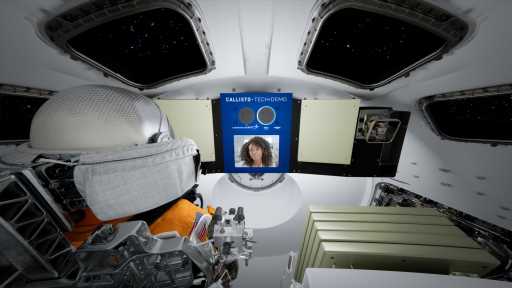Aerospace, tech companies team up to put Alexa, video conferencing in space
“Alexa, take me to the moon.”
People can now give that command to Amazon’s virtual assistant to hear about the upcoming launch of NASA’s Orion spacecraft when Alexa will make her cosmic debut. Instead of checking the latest news on Earth, Alexa might answer questions like how long it will take Artemis 1 to begin its orbit around the moon.
Artemis 1, built by Lockheed Martin Space in Jefferson County, will launch some time in April or May and will set the stage for missions that will include landing the first woman and the first person of color on the moon. Lockheed has already started building Artemis III, scheduled to return astronauts to the moon in 2025.
Artemis I won’t have a crew, but will have technology onboard, called Callisto, to demonstrate how astronauts on upcoming flights can use such earthly devices as voice-activated assistance and video conferencing to better stay in touch and attuned.
Callisto is named after an attendant of the Greek goddess Artemis.
People began thinking about what it will be like for crews on missions to the other side of the moon or to Mars, said Rob Chambers, Lockheed Martin’s director of commercial civil space strategy.
The sheer amount of data on the spacecraft and the challenges of communicating as the missions get longer highlighted the need for more processing onboard and “the next generation of interfaces to the crew,” Chambers said.
“We said, ‘What about just starting small, add a digital voice assistant to the cockpit?’”
Lockheed Martin talked to Amazon, Alexa’s creator, to see if the company would be interested in figuring out a system. “You can’t just stick an Echo Dot in the Orion,” Chambers said.
Lockheed, Amazon and Cisco began brainstorming and designing the technology three years ago. The result is a package that includes Webex video conferencing by Cisco as well as the voice technology.
The three companies paid for the software and hardware and paid NASA about $3 million for the support of its engineers in developing the package.
“So, very much a big industry investment with the objective of proving out this tech so we could use it going forward,” Chamber said.
Although Artemis 1 will be Alexa’s maiden voyage into space, it will be a kind of homecoming for her creators.
“Amazon’s original idea for Alexa was actually sort of modeled off the Starship Enterprise computer,” said Chambers, referring to the TV show “Star Trek.”
Alexa will use Orion’s onboard computer processing so there won’t be a lag in time caused by sending information from the spacecraft to Earth and back.
However, NASA’s Deep Space Network — radio antennas around the globe and in space — will allow Alexa to retrieve information from Earth. The network will also power the tablet-based Webex video conferencing.
“This first-of-its-kind solution could one day support future crewed missions, providing face-to-face interaction between crew, command center and loved ones,” Jeetu Patel, Cisco’s executive vice president and general manager of security and collaboration, said in a statement.
Alexa in space
Lockheed Martin designed space-grade hardware for Alexa to ensure the device can withstand the shock and vibration of launch and radiation. Amazon engineers worked on the acoustics to ensure good sound quality in the metallic, cone-shaped craft.
Alexa will process requests to control connected devices on the spacecraft, starting with lighting in the cabin, according to Amazon.
“Cisco had to do all sorts of compression for video,” Chambers said.
Because Artemis I won’t have a crew, people will serve as “virtual astronauts” at NASA’s Johnson Space Center in Houston to help test the system by asking Alexa questions and engaging in video sessions. Chambers said the testers will likely include government officials, teachers, students and perhaps the media.
“From that control center you’ll be able to get on the mic and say ‘Alexa, how fast is Orion going?’ Your voice will be transmitted to the cockpit. It will be played in the cockpit,” Chambers said.
The speaker’s face will appear in the spacecraft via Webex and the ring on Alexa will light up. Amazon has added “utterances” to the device so that it can answer such questions as the status of the instruments on board, the temperature in the craft or how far away the moon is.
Amazon said in a blog that it’s adding new interactive experiences to Alexa-enabled products to provide information, videos and images from the mission, which will last from 28 to 42 days.
Even before the launch, people at home can keep track of Artemis I, Lockheed Martin spokesman Gary Napier said.
“Alexa, take me to the moon,” Napier said during a demonstration.
The device responded that no date has been set yet for the mission to launch, adding: “I’ll be on board for the journey to test out how I can make astronauts’ jobs easier and more enjoyable on future missions.
“While I’m in space you can ask me questions and follow along to get the latest updates from the mission,” Alexa said.
Source: Read Full Article



